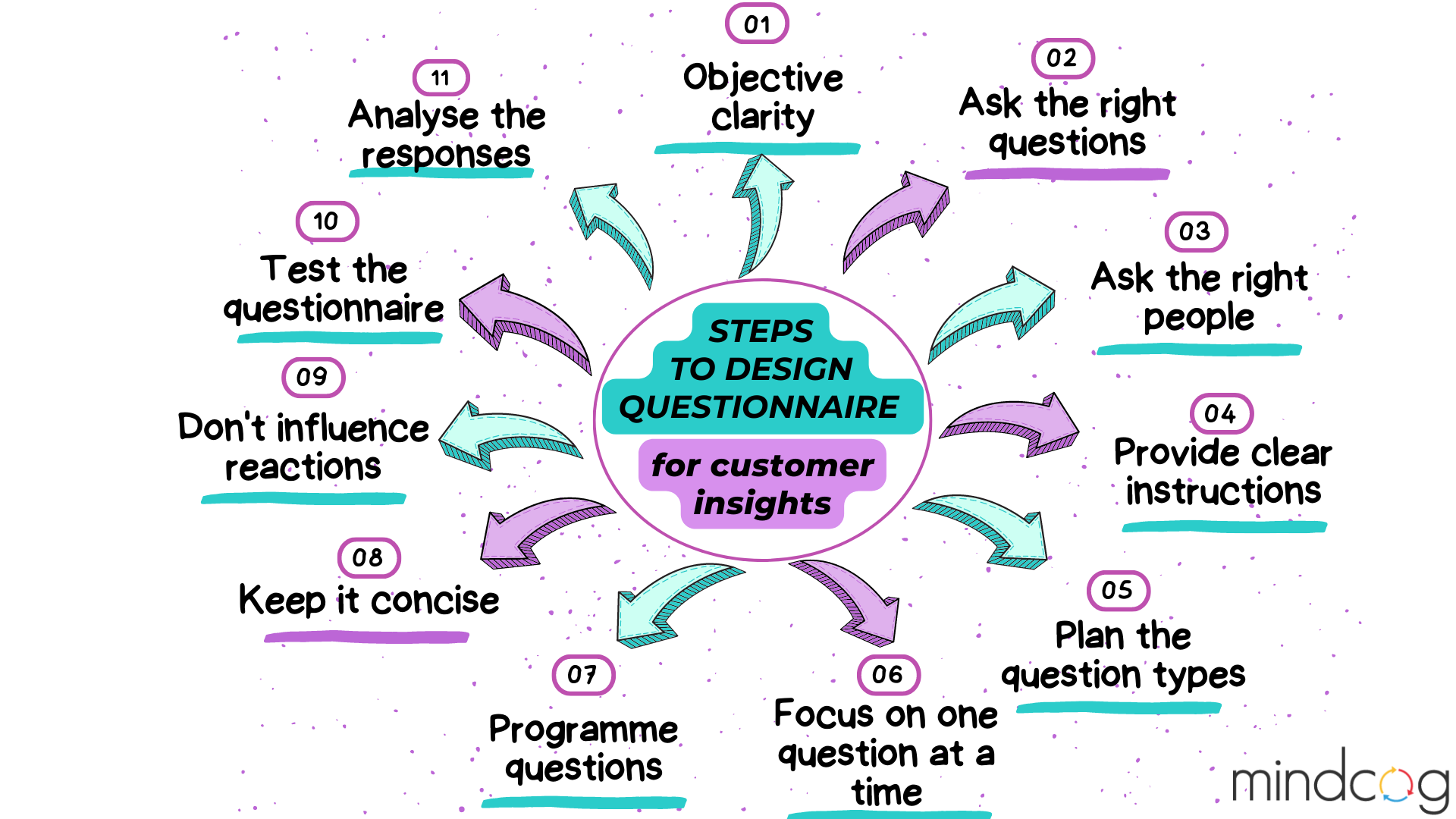Want to gather valuable insights from your target audience? One of the most effective ways to do so is through web surveys. A well-designed survey is an investment in the success of market research.
Asking the right questions is crucial for a successful survey. The design of a questionnaire can make or break the accuracy and reliability of the data collected. But how do you design a questionnaire that will yield meaningful responses and help you make informed business decisions?
Here are some best practices to consider when designing your survey questionnaire:

- Objective clarity: Analyse the basic objective of gathering customer insights. What information are you trying to discover? What actions do you want to take as a result of the survey? Visualise all of the relevant information you would like to obtain. List the most important topics first. Remember, you can’t solve the problem if you ask the wrong questions. Ask who, what, where, when, why and how questions to obtain insights. Brainstorm ideas and know what information you want to get out of the survey.
- Ask the right questions: Now that you have your core goals briefly ready, it is time for you to convert these goals to real survey questions. Although it is simple to start deviating from the main goals, it is crucial to stay true to your original choices until you are certain that changing the goals will improve the quality of your survey. Ensure that the results collected through surveys generate useful customer insights.
- Ask the right people: It’s vital to identify who you want to target? Are you asking existing product or service users? Or trying to find potential customers for your brand? Having clarity about your target audience helps in getting accurate results for decision-making. Provide clear instructions at the beginning of the survey to ensure respondents understand the purpose and structure of the questionnaire.
- Plan the question types: Whether to ask open-ended or closed-ended questions is always the tough part. The key here is to balance these two possibilities. Try to include objective and descriptive questions to balance the survey. Use a mix of open-ended and closed-ended questions in your questionnaire to gather both quantitative and qualitative data.
Closed ended question:

Open ended question:

- Focus on one question at a time: Avoid asking multiple questions at a time as it can confuse the respondents and they might not be able to choose the correct answers. Also, focus on one topic in each question to ensure clarity.
- Programme questions: Programming instructions (such as scripting, labelling and question types) are as crucial as questions themselves. They analyse how your survey will be built and eliminate assumptions and interpretations.
- Keep it concise: Respondents are less likely to complete the survey if it’s lengthy, the topic is not precise and tend to bounce back and forth. Design a short and easy-to-understand survey questionnaire with simple questions. Language is extremely important while designing a survey. For respondents to respond to the survey, avoid using jargon and too many technical terms. Use clear and concise language to make sure respondents understand the questions.
- Don’t influence reactions: While it’s good to make surveys easy for people to respond, be careful not to push them to respond in a certain way, avoid using leading questions that may influence the respondent’s answer. Keep the questions neutral and unbiased. The aim is to get honest, unbiased feedback, but badly structured questions and answers could inhibit that.
An example of a leading question that encourages a particular answer might be, ‘How impressed were you with our products?’ This question could more neutrally be asked as, ‘What did you think of our products?’
Answer choices also can prompt a particular response. For example, if you asked, ‘Would you be willing to lead a healthy life?’ and the available answers were, ‘Yes, I want to be healthy.’ or, ‘No, I don’t want to be healthy’ then you’re likely to get skewed answers.
- Test the questionnaire: Use the online preview mode to test the questionnaire twice. What would it seem like to a possible respondent? Achieve the proper length, organisation, and flow. Do the questions seem to be simple to understand? Test the survey’s questions on a small set of respondents before disseminating it to look for any potential problems or areas for improvement. Once you are confident that it will give the ideal level of simplicity and detail, it is wise to venture outside.
- Analyse the responses: After collecting the data, analyse the results and use them to make business decisions aligning with the objective of the survey.
In conclusion, designing a well-crafted questionnaire is crucial for gathering valuable customer insights that can drive business growth and success. By keeping the objectives clear, following best practices, and testing the survey before deployment, businesses can ensure they are collecting accurate and meaningful data that can inform strategic decision-making.

